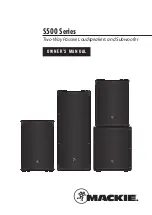
5.1 Checking the Welding Conditions
5-1
HW0480311
HW0480311
5
Welding Operation
5.1
Checking the Welding Conditions
Before starting actual welding operation, perform the test welding for welding conditions to
check if the welding performance is satisfactory. Remove oil, rust, oil paint, water, and foreign
matter generated by gas-cutting to prevent the surface pore and blowhole.
5.2
Wire Stickout
The wire length from the torch tip to the arc point is called wire stickout. Keep this length
constant during welding.
The following table shows the length (
) of wire stickout as standard.
5.3
Direction of Welding and Torch Angle
There are two welding types: backhand welding (same as manual welding), in which the torch
is tilted by 0
°
to 10
°
in the direction of welding, and forward welding, in which welding is
carried out in the same state but in the opposite direction. The forward welding is more
popular in robot welding because it results in better gas shielding and the welding can be
performed viewing the welding line.
Wire Diameter
(1.2 mm)
Wire Diameter
(0.9 mm)
Wire Diameter
(1.4 mm)
Length (
) of wire stickout
15 mm
10 to 15 mm
20 mm
0
°
10
°
Torch
Nozzle
Backhand
welding
Forward
welding
Gas
Base metal
Wire stickout
Forward welding is preferred in CO2/MAG welding.
58/129
















































